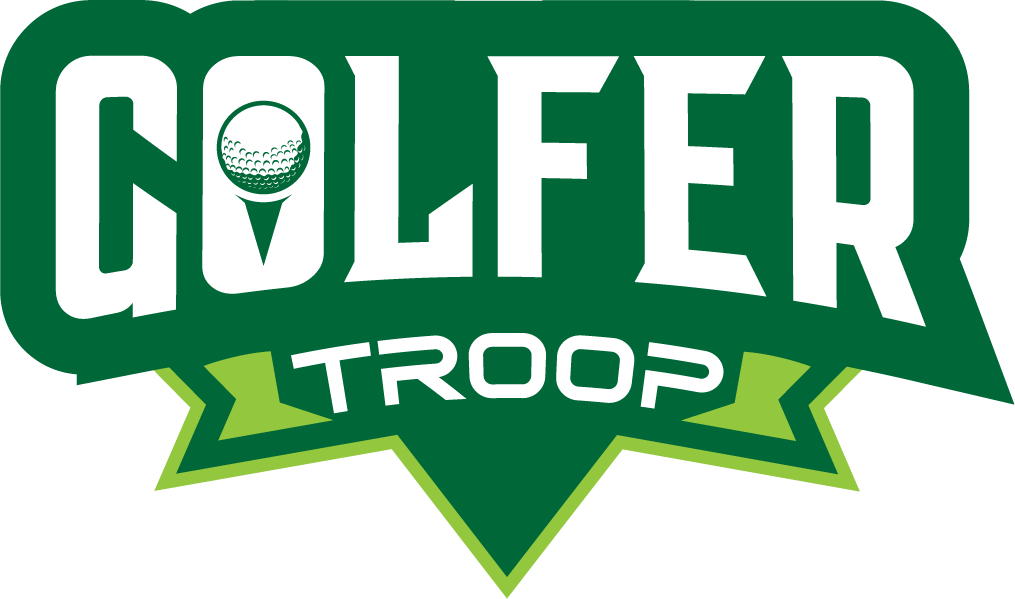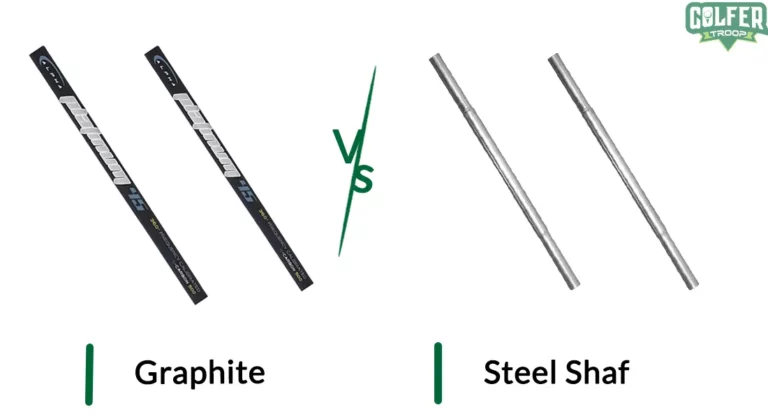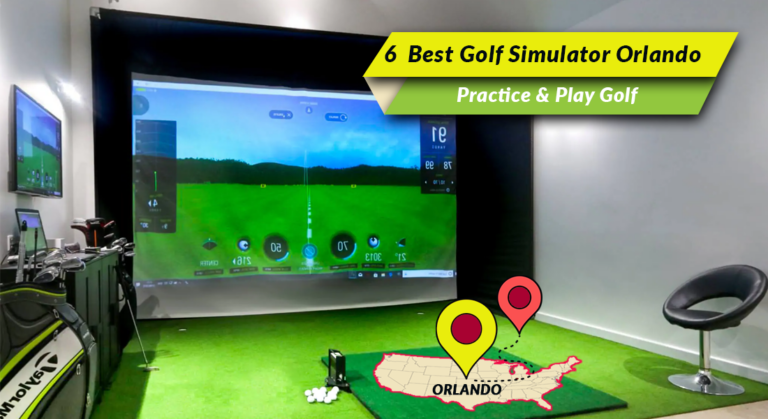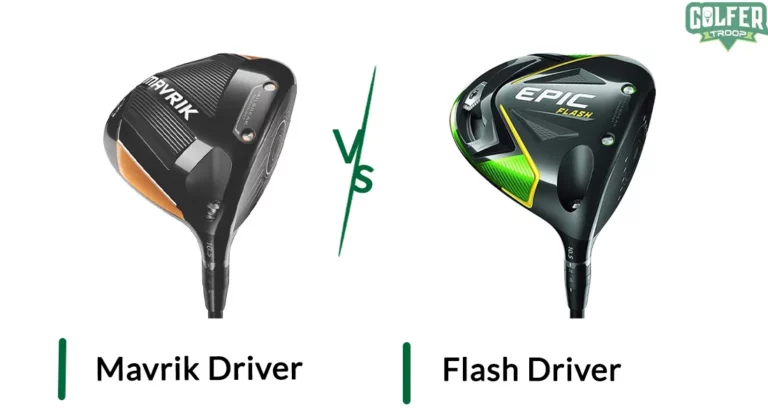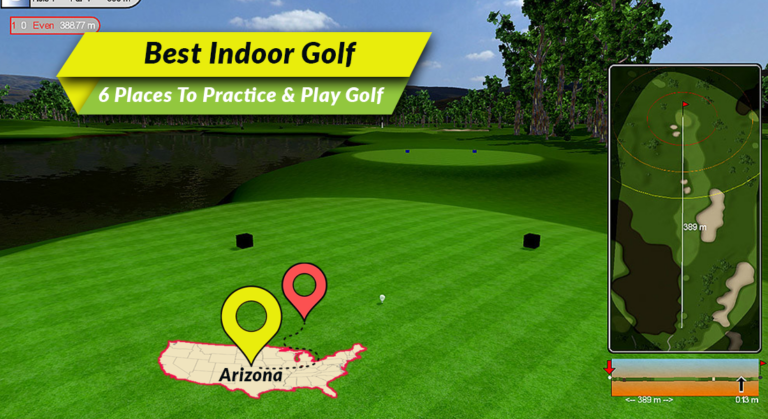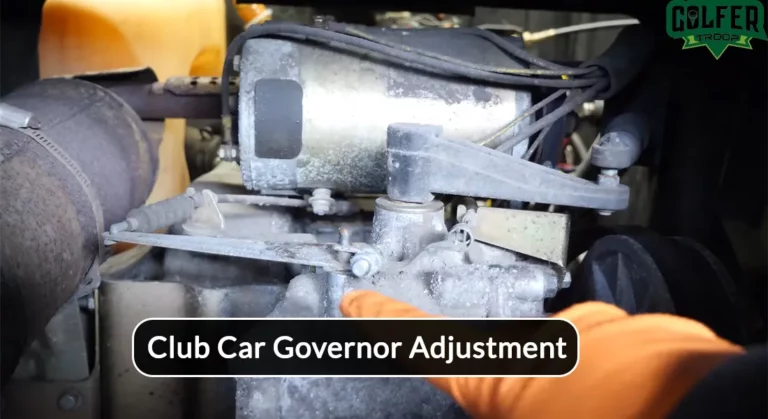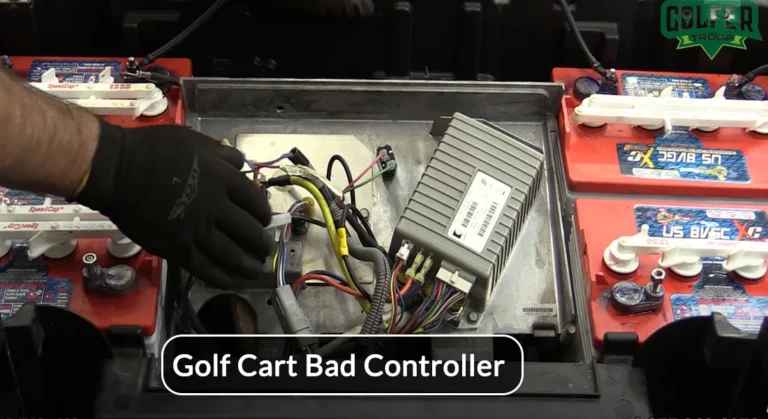Iron Swing Speed Vs Driver: Which Is Better For Speed?
Iron and drivers are golf clubs, so finding the difference between them can be really difficult for any golfer. The swing speed greatly depends on the type of golf club you are using, and hence it is essential to know the difference between Iron swing speed Vs driver.
The main difference between them is the striking position. To squeeze the golf ball with an iron, you should strike it down onto the rear. Driver swings, on the other hand, should have an attack angle that is somewhat up to send the ball higher for the most carry distance.
So, if you are confused about what club to choose between iron and driver, we are here to guide you with the perfect selection. Thus, keep on reading to know all about them.
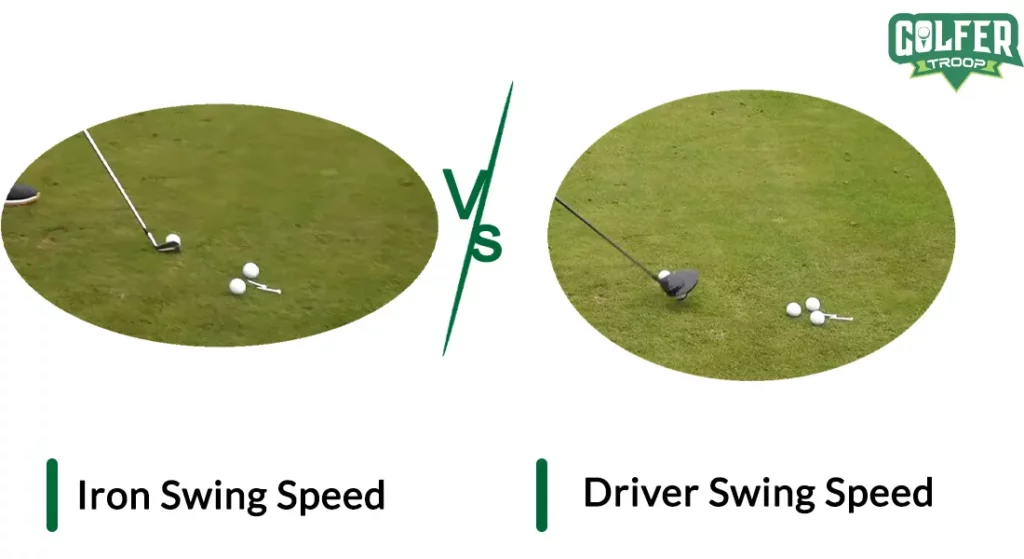
Iron Swing Speed Vs Driver: Comparison Table
In the table below, we will compare Iron swing speed and driver speed listing out all their fundamental differences. This will help you differentiate between them much more quickly.
| Criteria | Iron | Driver |
| Angle | 46 degrees for pitching wedges and 24 degrees for 7 iron | 9-12 degrees |
| Ball position | Slightly back | Inside the front foot |
| Swing Speed | 75 mph for 7 iron and 94 mph for 5 iron | 95-112 mph |
| Impact position | Downswing | Upswing |
| Follow through position | balanced | balanced |
Read Also: Newport 2 vs 2.5: Which Golf Putter Should You Choose?
What Are The Differences Between Iron Swing Speed And Driver?
We have already compared the basic differences between iron swing speed and driver. Below, we will discuss these differences in detail, which will help in better decision making.
Angle
One of the most important differences between them is the angle. The angle affects the overall position of the ball. Iron swings have a greater loft than the driver.
Hence, they have a higher angle of around 46 degrees for pitching wedges and 24 degrees for 7 iron. Consequently, an iron club with more loft will cause a ball to travel farther than one with a lower loft.
On the other hand, a driver has a lower angle of 9-12 degrees, which means the loft will be much lower than iron, reducing the carry distance.
However, lower lofts might transmit more force upon impact since there is a smaller slant angle.
Read Also: TaylorMade P770 VS Titleist T100S | Which is The Better Golf Iron?
Ball Position
The next difference that we will talk about is the ball position. The striking position of the ball is different for both of these clubs. Knowing about the ball position is important as different clubs have different requirements.
The regular loft angle of your club is altered when you place the ball forward in your posture.
You should place the ball inside of your leading foot while swinging the driver. The golf ball’s overall carry distance will rise as a result.
But when using an iron, you should play it slightly beneath your left chest muscle to create a ball-first connection and then have the iron bottom out ahead of the ball.
So, the golf ball should be forward in the stance. As irons come in different lengths, the ball may shift up somewhat as you approach the longer irons.
Swing Speed
Professional golfers swing their clubs more quickly than amateurs do. Thus, for golfers to increase shot precision significantly, it is crucial to be able to assess your swing speed and comprehend the effects of its altering.
When it comes to swing speed, the drivers have a much higher swing speed of around 95-112 mph as drivers are much lighter than iron.
They can also be swung considerably faster and over a larger arc. But, as the swing speed is higher, the control is a bit less than the irons.
Comparatively, iron golf clubs are much heavier than drivers and have a lower swing speed of around 75 mph for 7 iron and 94 mph for 5 iron.
Even though the swing speed is lower than drivers, they also provide a bit more control for the golfers.
Read Also: Mizuno JPX 921 hot metal pro vs forged: Which one is the right choice?
Impact Position
Where you make touch with the ball is called the impact point. The only part of a golf swing is when you truly make contact with the ball and have an opportunity to direct the golf ball in the position you want it to go.
The impact location for the golf iron occurs earlier at the bottom of the swinging arch.
As a result, the best launch circumstances for striking the golf ball to the target destination are created by this downswing, which accelerates the club head from zero mph to a great velocity at contact.
On the other hand, the impact position for drivers is an upswing. The move from a location near the bottom to the top spot is referred to as an upswing.
Golfers often use this swing posture to achieve the greatest ball flight, increasing ball lift and range.
Follow Through Position
Another key consideration while purchasing golf clubs is the follow through. The swing’s kinetic cycle finishes here, the power that wasn’t transmitted to the golf ball is lost, and the body starts to slow down again.
If you properly plan your follow-through, you can properly create trajectory endings that will allow you to strike the ball with the most power and control possible at the time of impact.
When it comes to follow-through for both iron and driver swings, they are well balanced and have a similar kind of reaction after striking the ball.
Read Also: Ping G410 Plus vs LST: which one is better?
Iron Swing Speed Or Driver: Which Is Better For More Speed?
Now we come to our main debate about which is better between the iron swing and the driver. As a pro golfer, you must learn and use iron and drivers properly.
They have a huge number of differences between them, and both are intended for different types of performances.
But, when you are looking for a golf club with more speed, a driver is the way to go, as they have an average swing speed of 95-112 mph.
This is possible due to their low weight and easy striking. In comparison, irons have an average speed of around 75-94 mph.
However, do keep in mind that iron can provide better control of the swing than the driver.
Read Also: Ping i210 Vs Titleist T100: Which Golf Irons Should You Choose?
FAQs.
Below, we will discuss all the faqs that might have popped up in your head after reading our guide. We believe this section will further clear your confusion about decision-making between them.
Is Iron Faster Than Driver?
No, iron is not faster than a driver; pros playing with a driver can produce a swing speed of 95-112 mph on average.
In contrast, a typical iron has a swing speed of 75-94 mph. But iron does provide more control than playing with a driver.
Are Iron and Driver beginner-friendly golf clubs?
You must learn to use the iron and driver properly as a golfer. Playing with a driver and iron are both easier as drivers have a low weight making them easier to swing.
Iron, on the other hand, does have a higher weight but also provides better control of the overall shot.
Should the driver and iron swing speed be the same?
In actuality, you should use a consistent stroke with each club. The driver swing and iron swing do have very few changes, though.
When some golfers step into the shot too much, their irons may be pure, but their driver may explode.
Meet Jalal, a passionate golf writer and the driving force behind Golfertroop.com, your go-to destination for all things golfing! Whether you’re a seasoned golfing veteran or a beginner taking your first swing, Jalal is here to assist you in making the most out of your golfing experience.
